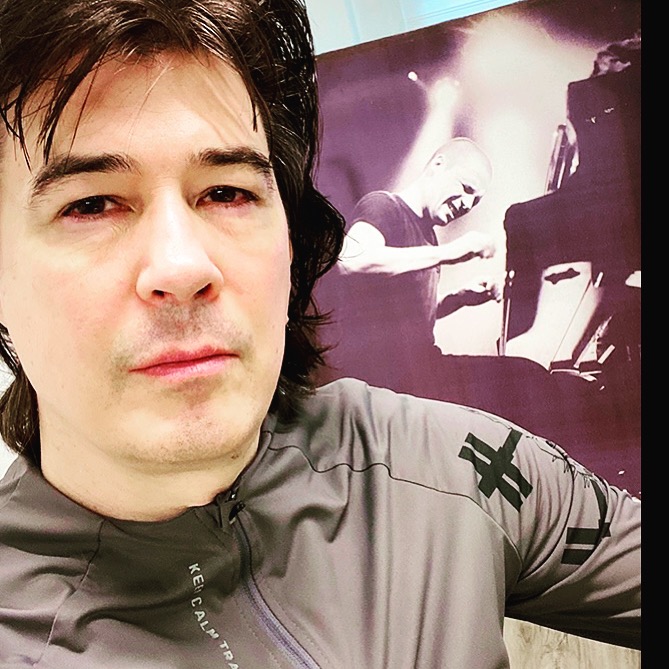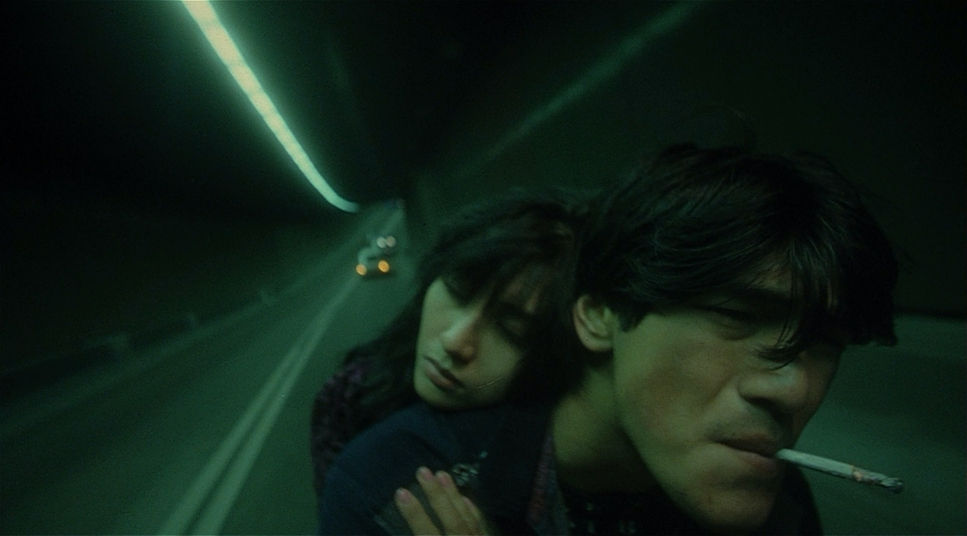Colors Of Emotion in Film (1)
- Holger 侯嘉 Metzger

- Nov 14, 2024
- 8 min read
Updated: Nov 29, 2024
The Emotional Impact of Colors in Wong Karwai’s early Films & Learnings for Filmmakers and Colorists

Part I: Introduction & Colors of Emotion in ‘As Tears Go By’
INTRODUCTION
In any given scene in film, as much as in life, colors are invariably seen and interpreted on an emotional rather than intellectual level, and within prevailing cultural and psychological contexts.
Millennia of rites and rituals, codes, stories, religious doctrines and even political propaganda have created associations and meanings attached to specific colors. Some may be limited to a certain narrow cultural context; others transcend those confines. Just like mythology and storytelling in general, colors serve as cognitive vessels of universally recognized meaning and emotions that humans the world over identify with.
For example, in most Western cultures red carries connotations of power and anxiousness, even evil forces (such as associations with the devil in Christian religion). At the same time, red famously and equally powerfully denotes lust, love and romance.
In Chinese culture red’s dominant association is that of auspiciousness and prosperity, as well as associations of a 'force' that offers protection against various sorts of evil. You will find red elements at weddings and during Chinese New Year to expel the ghosts and spirits of the past. Modern commercial exploitation has further strengthened the romance association, too.
In general, there is an East-West cultural associative overlap in terms of red’s “power” associations, whether of a romantic or threatening nature.
An adjacent color on the color wheel, orange, symbolizes a good harvest and emotional warmth within a Chinese (and other east Asian) cultural context. This is due to its traditional association with yellow, the Chinese emperor’s exclusive color which denotes wealth, nobility and social standing.
In a Western cultural environment, orange also symbolizes emotional warmth and even some sort of romantic feelings - while another key association includes toxicity, danger and death, as famously displayed via oranges (the fruits) in ‘The Godfather’ trilogy. This more malignant association is not exclusive to Western culture either: there are plenty of examples in Chinese stories and films where the color orange trespasses the fine line between benign, soothing comfort and hidden danger or devious intent.
Just as cultural context matters, it is important to note that in film not only cultural elements define and shape an audiences’ perceptions and feelings about the specific colors that help “paint” the story. The story itself is the main driving force in eliciting perceptual and emotional responses, and so is the deployment of color, luminance, contrast, etc. In addition, there is the juxtaposition and interplay of colors in all their various hues which, in any given film scene, direct the eye and mind of the viewer, thus wielding considerable emotional impact.
In other words, and notwithstanding established (out-of-story-context) associations, colors may and do take on story-specific meaning. Specific colors are used by directors, cinematographers and colorists to convey a character's emotions, reveal the film's theme, create a specific atmosphere and elicit certain targeted emotional responses from the audience. Color has a direct and decisive impact on an audiences’ deduction of a certain meaning from what they see – just like the sequential arrangement and juxtaposition of images in film editing which (as Lev Kuleshev, for instance, demonstrated a century ago) command a powerful influence on the viewer’s interpretation.
As such, color in all its variations and possibilities plays a critical role in telling the story which offers the film colorist a powerful creative playground in which she or he may deploy a broad range of hues, tones, luminance, contrast, density and saturation, to craft or strengthen meaning and to evoke emotional responses.
Working with the director, DP and editor, the colorist must be acutely aware of the story’s emotional intent as already aimed at by the script and the cinematography, to effectively strengthen (or tweak, if so required) the corresponding color scheme for desired impact.
This essay shall be looking at the use of color elements and their emotional impact in selected scenes from director Wong Karwai’s earlier films, from the late 1980s to the mid ‘90s. Wong is one of Hongkong’s most gifted filmmakers who started his career when the enclave was still a British crown colony.
At that time the city represented a unique, often unfathomable, friction-worn and yet uniquely mesmerizing mix of British cultural and commercial influences and the emotional fabric of a displaced Chinese diaspora, given that the majority of Hongkong residents during Wong’s formative years were refugees from the Chinese Communist 1949 victory on the mainland. Wong himself, born in Shanghai in 1958, left the People’s Republic as a child to settle in Hongkong.
From early on in his career he developed his now famous trademark features, ranging from low shutter speed photography in tension-filled scenes to the juxtaposition of carefully chosen colors to create specific moods and emotions, and to let those colors help tell the story by conveying direct or more visceral, subtextual meaning.
This series presents observations on film color deployment in selected scenes from Wong Karwai’s earlier films during Hong Kong’s so-called “golden age of cinema” during the 1980s and 90s, including As Tears Go By (1988), Chungking Express (1994), Fallen Angels (1995), and Happy Together (1997).
AS TEARS GO BY (1988)
As Tears Go By belongs to the 1980s Hongkong Triad crime genre - even though Wong Karwai softens the violence by entangling small-time gangster Wah (played by Andy Lau) into a slowly developing, timid romance with his distant cousin Ngor (Maggie Cheung).
It is a relationship that complicates Wah’s life as he finds himself emotionally torn between the healing effects of Ngor’s innocent, simple love, and his fierce sense of fraternal duty towards his impulsive troublemaker brother Fly (Jacky Cheung) whose most conspicuous talent is the ability to place both men in lethal danger whenever possible.
Wah keeps struggling with this inner emotional conflict: allowing himself to be pulled back into a criminal underworld, a world he has begun to doubt while at the same time feeling increasingly pulled into the safe simple world created by his romance with Ngor. He is trapped between pragmatic decisions and unfathomable emotions.
Wong Karwai’s utilization of specific colors and hues serve to underline that tension and effectively inform the audience’s visceral story experience.
Teal and Orange – Shapeshifting Colors of a Torn World
From the start, conflict-laden underworld scenes are painted in a medium/low saturated cyan (or teal) as well as relatively monochromatic dark blue/green/black elements. Cyan is the color of danger that runs through the gangster world – a color that feels like sucking the life out of the protagonists’ and, by extension, the audience’s lungs.

[1 – As Tears Go By, Wong Karwai, HK 1988 – Hongkong Triad underworld scenes]
When, early in the story, a young innocuous Ngor arrives and puts up at Wah’s apartment, Wong Karwai uses a warm orange-brown palette that does not, perhaps, directly suggest any romantic associations. Nevertheless, the color choices calm Wah’s (and the story’s) tension by adding a sense of cautious harmony to the protagonists’ interaction (and a temporary sense of irritation in Wah), with the added narrative benefit of foreshadowing the nature and fabric of their ensuing romantic but eventually doomed relationship.

[2 – As Tears Go By, Wong Karwai, HK 1988 – Nhor arrives at Wah’s apartment]
Then, as the A Story (triad violence) and B Story (romance) unfold and Wah’s underworld brutality enters his private sphere which Ngor is now part of, the emotionally defined warmer tones mesh and juxtapose with the teal/cyan colors that the story has already assigned to the dangerous gangster sphere.
This infuses palpable toxicity into related scenes, visually heralding the inevitable encroachment and clash of two opposing worlds that Wah straddles and cannot, or does not want to, extricate himself from. It sets in motion an implacable emotional transformation, visually cued and narratively supported by the colors deployed here.

[3 – As Tears Go By, Wong Karwai, HK 1988 – an injured and bleeding Wah’s returns to his apartment where a terrified Ngor administers first aid]
Soon after, Ngor and Wah embark on a timid but increasingly intense romance, and a warm orange-brown pairs up with light, gentle, desaturated cyan/blue hues – while on the surface suggesting the soothing comfort and safety of love, in the audience’s pre-conditioned associations with those cyan/blue hues, Wah’s dangerous world simmers beneath that seemingly safe surface, ready to unleash its destructive forces at any moment.

[4 – As Tears Go By, Wong Karwai, HK 1988 – the start of Wah and Ngor’s timid romance]
This represents a purposely designed color strategy and visceral communication style on Wong Karwai’s part, one that exemplifies the torn worlds Wah struggles with, as symbolized by the violence-associated cyan/blue tones and whenever those get paired up with warmer orange/brown hues.
Regarding both cinematography and post-production/color development, the filmmakers took care to control their chosen colors’ specific hues to support and convey important narrative meaning and, by extension, steer each scene’s desired emotional impact on the audience.

[5 – As Tears Go By, Wong Karwai, HK 1988: Wah on his way back to a violent underworld]
As things continue to escalate in the A Story’s brutally violent underworld and the conflict becomes increasingly dangerous to Wah and his brother Fly, cyan tones begin to transform into deeper blues, greys and blacks that visually – and emotionally – enhance the sense of lethal danger.

[6 – As Tears Go By, Wong Karwai, HK 1988: the violence escalates]
It doesn’t take long for those darker tones to seep into and replace the comparatively more gentle blue tones in Ngor and Wah’s romantic B Story: waiting for him at the bottom of a staircase by the marina she suddenly finds herself confronted with the destructive brutality of her lover’s world. With potent narrative impact, darker blue hues now enter her world, effectively communicating to the audience that their romantic happiness is highly tenuous, a devastating truth that continues to crystalize, slowly, implacably.

[7 – As Tears Go By, Wong Karwai, HK 1988: Wah arrives seriously wounded, Ngor takes him to see a doctor in the middle of the night]
Then, when the story moves towards its tragic conclusion, in one of the final scenes Wong Karwai deploys a similar warm orange-brown tone in juxtaposition with gentle, desaturated cyan-blue hues, almost the same color design that painted the beginning of Wah’s romantic relationship with Ngor.
Just as carefully considered as the color strategies discussed above, the colors and hues of this scene just prior to the tragic finale communicate how much Wah values his relationship with his brother Fly, and how he finds himself painfully torn between romantic feelings towards Ngor and an equally strong sense of duty towards Fly, to the point that he willingly risk his own life when anyone else would probably have turned away and left the incorrigible troublemaker to go and face his inevitable fate on his own.

[8 – As Tears Go By, Wong Karwai, HK 1988: Wah’s final yet futile attempt to make his brother Fly listen to reason]
It is a poignant ending to the story, and to both men’s lives, driven by the narrative arc which is bestowed the necessary emotional impact by the color palette of these scenes.
All Images sourced via Shotdeck.com (subscription), unless otherwise indicated.
This 4-part Essay formed author Holger E. Metzger’s Thesis for Dado Valentic’s Color Training Master Program, the world's leading and most advanced professional film color grading program.



Comments